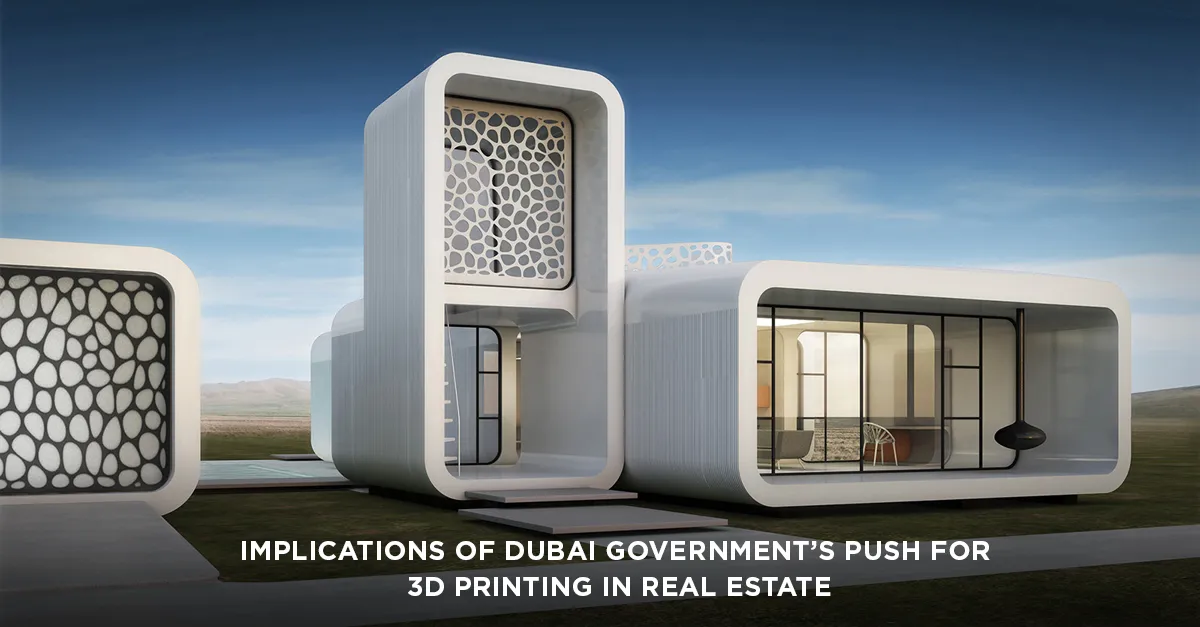Dubai's real estate sector continues to captivate the global market with its ambitious goals and innovative approaches. As the city sets its sights on achieving $272 billion in property transactions, cutting-edge technologies like 3D printing are poised to play a pivotal role. This transformative technology offers significant advantages, aligning perfectly with Dubai’s vision of a sustainable, efficient, and futuristic urban landscape.
The Vision for Dubai's Real Estate Sector
Dubai has always been at the forefront of innovation, aiming to position itself as a global leader in real estate and construction. From iconic skyscrapers to luxury developments, the city exemplifies architectural excellence. To meet its ambitious $272 billion property transaction target, Dubai must address challenges such as construction costs, environmental concerns, and the demand for rapid urban expansion.
This is where 3D printing emerges as a revolutionary tool, transforming the way buildings are designed, constructed, and delivered. The technology not only aligns with Dubai’s focus on innovation but also supports its sustainability goals outlined in the Dubai 3D Printing Strategy.
Understanding 3D Printing in Construction
3D printing, also known as additive manufacturing, involves creating three-dimensional objects layer by layer using digital models. In construction, this technology is used to print building components, entire structures, or intricate designs that were once deemed impossible or cost-prohibitive with traditional methods.
Key benefits of 3D printing in construction include:
- Reduced Costs: 3D printing minimizes material wastage by up to 60%, significantly cutting construction expenses.
- Time Efficiency: Structures that would traditionally take months to complete can be printed in days or weeks.
- Sustainability: Using sustainable materials and optimizing production processes, 3D printing reduces the environmental impact of construction.
- Design Flexibility: Complex, customized designs can be created with ease, allowing for unique architectural features.

Dubai’s Adoption of 3D Printing
Dubai’s government has been a strong advocate for 3D printing, aiming to use the technology extensively in construction projects by 2030. The Dubai 3D Printing Strategy emphasizes leveraging this innovation to position the city as a global hub for 3D printing technology.
Several milestones have already been achieved:
- Dubai Municipality’s 3D-Printed Office: The world’s first fully functional 3D-printed office building was unveiled in Dubai in 2016. This project demonstrated the technology’s potential for cost and time savings, with the building completed in just 17 days.
- Affordable Housing Initiatives: Dubai is exploring the use of 3D printing to construct affordable housing, addressing the city’s growing population and urbanization needs.
- Innovative Construction Projects: Leading developers are incorporating 3D printing into luxury developments, blending sustainability with cutting-edge design.
How 3D Printing Supports $272 Billion Transaction Goals
To achieve its ambitious property transaction targets, Dubai must increase the supply of high-quality real estate assets while maintaining cost efficiency. 3D printing addresses these needs by:
-
Enhancing Construction Efficiency
The speed of 3D printing allows developers to bring projects to market faster, meeting the increasing demand for residential, commercial, and mixed-use spaces. Faster project completion also translates to quicker returns on investment for stakeholders. -
Reducing Development Costs
With material wastage minimized and labor costs significantly reduced, 3D printing offers a cost-effective solution for developers. These savings can be passed on to buyers, making properties more affordable and attractive to investors. -
Promoting Sustainable Development
Sustainability is a key consideration for modern investors. By using eco-friendly materials and reducing the carbon footprint of construction, 3D printing enhances the marketability of real estate projects in Dubai. -
Driving Architectural Innovation
The ability to create intricate, customized designs with 3D printing allows developers to offer unique, high-value properties. This innovation attracts global buyers looking for exclusive investments, boosting transaction volumes.
Challenges and Opportunities
While 3D printing offers immense potential, it is not without challenges. The technology requires significant upfront investment in machinery and expertise. Regulatory frameworks must also adapt to accommodate 3D-printed structures.
However, Dubai’s commitment to innovation and its supportive government policies create a conducive environment for overcoming these challenges. Collaborations between the public and private sectors are fostering the development of 3D printing capabilities, ensuring that the technology is accessible and scalable.
The Future of 3D Printing in Dubai Real Estate
As Dubai continues to integrate 3D printing into its construction practices, the technology is set to redefine the city’s real estate landscape. From luxury developments to affordable housing, 3D printing offers a versatile solution for meeting diverse market needs.
With its potential to enhance efficiency, reduce costs, and promote sustainability, 3D printing is more than just a construction tool—it is a catalyst for achieving Dubai’s $272 billion property transaction goals. By embracing this innovation, Dubai is not only building its future but also setting a global benchmark for real estate excellence.
In conclusion, the integration of 3D printing into Dubai’s real estate sector marks a pivotal shift toward a more efficient, sustainable, and innovative construction industry. As the city scales new heights, this technology will play a central role in shaping its skyline and cementing its reputation as a global leader in real estate.




0 Comments